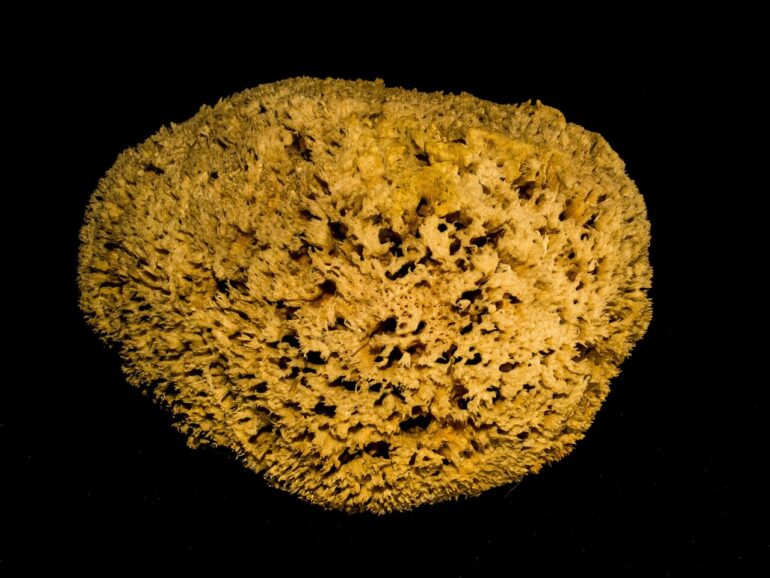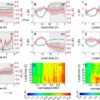Oxygen levels in the atmosphere during the mid-Proterozoic—about 1.4 billion years ago—were higher than previously thought, according to an international team of researchers who looked at oxygen combined with sulfur to determine that previous numbers were probably lower limits, not maximums.
“What’s interesting to the geobiologist is that we know that oxygen went up about 1.4 billion years ago,” said James F. Kasting, Evan Pugh University Professor of Geosciences, Penn State. “Some people think it was greater than 1%, but others think it was much lower.”
The researchers reanalyzed samples obtained by other researchers in 2018 using a model that constrained the transfer of oxygen between the air and ocean. They looked at the proportions of three stable isotopes of oxygen in sedimentary sulfates. Oxygen 16 is the most abundant form, while oxygen 17 and 18 are far less abundant.
“Researchers look at oxygen 18 all the time because it is the stable isotope compared to oxygen 16 by those looking at the temperature record from the past,” said Kasting. “Here we looked at oxygen 17 as well because anything that fractionates oxygen 18 will fractionate oxygen 17 about half as much.”
Isotopic fractionation is the relative abundance of each isotope of an element found in a sample. Certain biological and chemical processes prefer one isotope over another and so alter the expected ratios.
“We used the data to try to place a limit on the oxygen, but we showed that you can’t do that,” said Kasting. “Our analysis was fairly sophisticated, but if you go to oxygen levels as low as previously suggested you get too much fractionation, the data come out negative.”
Previous research by others estimated upper oxygen levels at 1%, but Kasting and his team reported in the Proceedings of the National Academy of Sciences an estimated 1% as the lower limit for oxygen.
Today, all three oxygen isotopes are removed from the atmosphere by plants and algae, but, in the mid-Proterozoic the terrestrial biosphere was much simpler because there were no vascular plants. There may have been single celled organisms or microbial mats but that would have been all there was.
Scientists are interested in the atmospheric level of oxygen on Earth during earlier times because the evolution of life depends on available oxygen. Animals like sponges—the simplest animals—come in at the end of the Proterozoic and they minimally need 0.5 to 4% oxygen. By comparison, today’s oxygen level is 21%.
“So, the question becomes, was the level of oxygen in the past not high enough to support more complex life,” said Kasting. “Or was something else keeping it from developing?”
The absence of oxygen as the cause of slow or no development of organisms has become dogma to some geobiologists, according to Kasting. “But it may just have taken a long time for development. The period from 1.8 to .8 billion years ago is often called the ‘Boring Billion’ because although the climate is warm during most of that time there is sort of a stasis. Everyone would like to know what stabilized it.”
At the end of the Proterozoic, there were sponges. By the Cambrian explosion 543 million years ago the fossil record takes off and there are myriad of imprints in the marine sediment from soft-shelled creatures.
“Anything more complicated than a single cell organism requires greater than 4% of oxygen,” said Kasting. “Our paper suggests that there was this much oxygen, but other papers have said there wasn’t.”
According to Kasting, evolutionary biologists don’t like the term “Boring Billion” because they argue that changes were occurring, believing that that animals had to have evolved earlier than you see them in the fossil record. Something had to be going on during that time.
“During that time something was stabilizing the climate, probably feedbacks between oxygen and methane,” said Kasting. “We would like to know what the oxygen content was, but we would also like to know why the fossil record looks like that.”
Also working on this project from Penn State were Peng Liu, first author and recent doctoral recipient; Jingjun Liu, undergraduate student; and Aoshuang Ji, doctoral candidate, all in the Department of geosciences and Raymond G. Najjar, professor of oceanography and geosciences.
More information:
Peng Liu et al, Triple oxygen isotope constraints on atmospheric O 2 and biological productivity during the mid-Proterozoic, Proceedings of the National Academy of Sciences (2021). DOI: 10.1073/pnas.2105074118
Provided by
Pennsylvania State University
Citation:
Reevaluation puts mid-Proterozoic oxygen levels higher than previously reported (2022, March 25)



